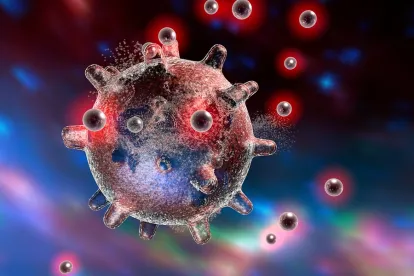On October 2, 2019, the U.S. Environmental Protection Agency (EPA) published a notice in the Federal Register announcing the availability of, and soliciting public comment on, the draft document entitled “Antimicrobial Performance Evaluation Program (APEP) A (Draft) Risk Based Strategy to Ensure the Effectiveness of Hospital-Level Disinfectants” (draft Strategy). EPA states that “The draft Strategy provides a framework to ensure that registered hospital-level disinfectants and tuberculocide products continue to meet Agency efficacy standards once they are in the marketplace.”
The draft Strategy was developed in response to EPA’s Office of Inspector General’s (OIG) report “EPA Needs a Risk-Based Strategy to Assure Continued Effectiveness of Hospital-Level Disinfectants,” which recommends EPA’s Office of Pesticide Programs (OPP) to develop a risk-based strategy to assure the effectiveness of public health pesticides used in hospital settings once products are in the marketplace. EPA developed the draft Strategy based on OIG’s recommendations.
EPA states that the draft Strategy uses a risk-based approach “to inform the Agency on the prioritization and selection of hospital-level disinfectants and associated label claims for testing,” and states that its order of priority is as follows:
- Product label claims for specific microbes and disease prevalence data;
- Evaluation of uncommon label claims and unique product application processes; and
- Evaluation of products tested using new and/or recently revised methods.
Additional refinement factors may also be considered such as:
- Issues identified during post-registration, product reregistration, and registration review;
- Trends observed under the previous testing program (Antimicrobial Testing Program (ATP)); and
- Products with high production volumes.
EPA states that it will be considering two options individually or in combination for obtaining samples for testing: (1) EPA purchase of products in the marketplace; and (2) product samples provided by the registrant. Several options for allocating efficacy and chemistry testing resources may be utilized individually or in combination; these options include: (1) Office of Pesticide Programs Microbiology Laboratory and the Analytical Chemistry Laboratory; (2) interagency agreements and contracts; (3) third-party verification testing; and (4) registrant testing; and/or Data Call-Ins.
In the Federal Register notice, EPA lists six focus questions on which it is specifically requesting public comment:
- Please comment on the proposed risk factors and refinements, their proposed prioritization, their strengths and limitations, and recommendations for other risk factors not considered.
- Are the options provided for sample collection suitable for the purpose of the testing program, and if not, what approaches would you suggest to optimize sample collection. Please provide advantages and disadvantages to your recommendations as appropriate.
- Should the Agency and/or stakeholders conduct the laboratory evaluation (formulation chemistry and product efficacy) of disinfectant products? Provide examples to support your opinions and itemize situations where one approach would be more favorable versus the other.
- Please comment on the flexibility and feasibility of the example workplan approach (See Appendix A, draft Strategy).
- Please comment on the proposed communication strategy to convey test results to registrants and the general public including the preferred frequency of updates.
- Please provide suggested routes for resolution of efficacy failures. Previously, these were addressed by “regulatory fixes” to include retesting, label amendments, etc.
EPA states that the draft Strategy may be of interest to health care/hospital professionals and all entities who have EPA registered antimicrobial products that are available in the marketplace, particularly those with products that make hospital disinfectant claims (e.g., claims against Staphylococcus aureus and Pseudomonas aeruginosa) and other claims for notable public health pests (e.g., Clostridium difficile, methicillin resistant Staphylococcus aureus, Mycobacterium spp.).
All comments on the draft Strategy document must be received by EPA on or before December 2, 2019. EPA expects to publish the APEP final strategy in 2020 and schedule implementation to begin in 2022.
Documents referenced in the draft Strategy are available at www.regulations.gov in Docket Number EPA-HQ-OPP-2018-0265. More information on the APEP is available on our blog.




 />i
/>i

